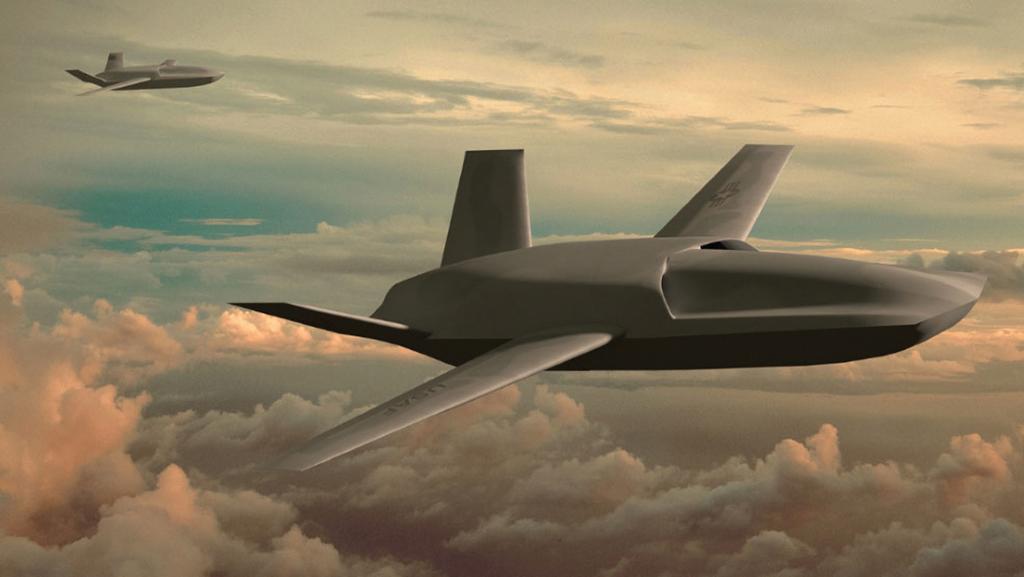Opinion: Growing UAS Fleets Will Need Predictive Maintenance

General Atomics’ Gambit is the company’s foray into Collaborative Combat Aircraft development ahead of Pentagon requirements.
Whether conducting intelligence, surveillance and reconnaissance (ISR) or taking part in close air support (CAS) in combat, uncrewed aircraft systems (UAS) are increasingly in demand within the Defense Department. But the timely availability of these systems due to fleet maintenance issues has come into question–possibly jeopardizing mission objectives.
Collaborative combat aircraft (CCA), increasingly viewed as a threat deterrent for adversaries in future conflict scenarios, will increase the complexity of managing aircraft fleets. We must take more proactive measures to address this issue.
The U.S. military now operates an estimated 11,000 UAS in support of domestic training and overseas contingency missions, with significant investments in the near future: In March, Air Force Secretary Frank Kendall announced that the service will ask for more funding in the fiscal 2024 budget to ramp up its drone wingman fleet with 1,000 “attritable” CCAs that are intended to fly multiple missions and “may not return.” A House Armed Services Committee proposal would impose cost controls on the program. Regardless of how these controls are set—or how policymakers set thresholds to define aircraft as “expendable,” “attritable,” or “exquisite”—any aircraft intended to fly multiple combat missions will require some degree of maintenance.
With this growth in CCAs, an inability to conduct fleet maintenance in a timely manner could further exacerbate a low mission capable rate (MCR)—defined as the percentage of time an aircraft can perform one of its tasked missions.
A September-published report from the U.S. Government Accountability Office (GAO) highlights the “costly” drain of maintenance issues—for example, sustaining 2,500 F-35s will run an estimated $1.7 trillion.
Overall, the aircraft industry needs mechanics. The current shortfall is estimated at 12,000 to 18,000 maintenance, repair and overhaul (MRO) technicians and workers on North American fleets. According to the GAO, aircraft sustainment/MCR is a challenge for U.S. military aircraft, which also face shortages and delays in getting parts.
All of which means the MCR problem requires responses to issues involving people, parts and technology. It’s clear these problems will extend to mission-critical CCAs if they are not resolved. As aircraft platforms grow more technologically complex, they become more difficult to maintain.
In response, the Pentagon should consider incorporating the following components into its aircraft maintenance policies and strategies:
Fleet data analysis for better predictive maintenance. By leveraging the latest innovations in condition-based maintenance, artificial intelligence (AI) and machine learning analytics, predictive maintenance lends unique insights into aircraft performance capacity and equipment condition. Recent survey findings suggest U.S. military leaders anticipate successful implementation of predictive maintenance can lead to a 35% increase in MCR.
Fleet data remains the relatively untapped resource that can unlock the full power of predictive maintenance, to feed commanders with the required, detailed data capture and real-time analysis to establish historical baselines of optimum performance and identify anomalies which signal potential sources of failure. This data enables commanders to make smarter, faster decisions to ensure readiness.
Sensor fusion at the edge for better cybersecurity. Manned and unmanned aircraft platforms are getting more technically dependent and complicated. They are, in essence, flying computers, comprising many interconnected sensors and control systems that our adversaries are actively working to exploit.
Frequently, cyber anomalies are misdiagnosed as maintenance anomalies, resulting in unnecessary replacement of parts and components. The analysis of fleet data will greatly help detect anomalies that signal a possible threat. Until recently, computing power and storage capacity was not up to the task of capturing and parsing this type of data for a single aircraft in flight, let alone entire fleets of aircraft. With this data, cyber analysts can conduct cyber incident response, intrusion detection and active cyber hunt operations for an entire fleet while empowering operators to confidently respond to threats in real time.
Increased investment in training and education. We can help close the MRO talent gap with more training and education for the next generation of technicians and support staff. We can promote the military as a great training ground for a future, sustainable and successful career in MRO.
The full potential of these unmanned investments will remain unrealized if we don’t recognize how the addition of vast numbers of CCAs to our fleet of combat aircraft will add more complexity to aircraft maintenance and operations, resulting in excessive sustainment costs. We have the technology to take deep dives into existing data to reduce this complexity and increase the operational readiness of these systems. If we combine this with enhanced cybersecurity and training, we will ensure that the military receives a highly available and capable source of strategic agility in the air.
- Egon Rinderer is chief technology officer for Shift5.
